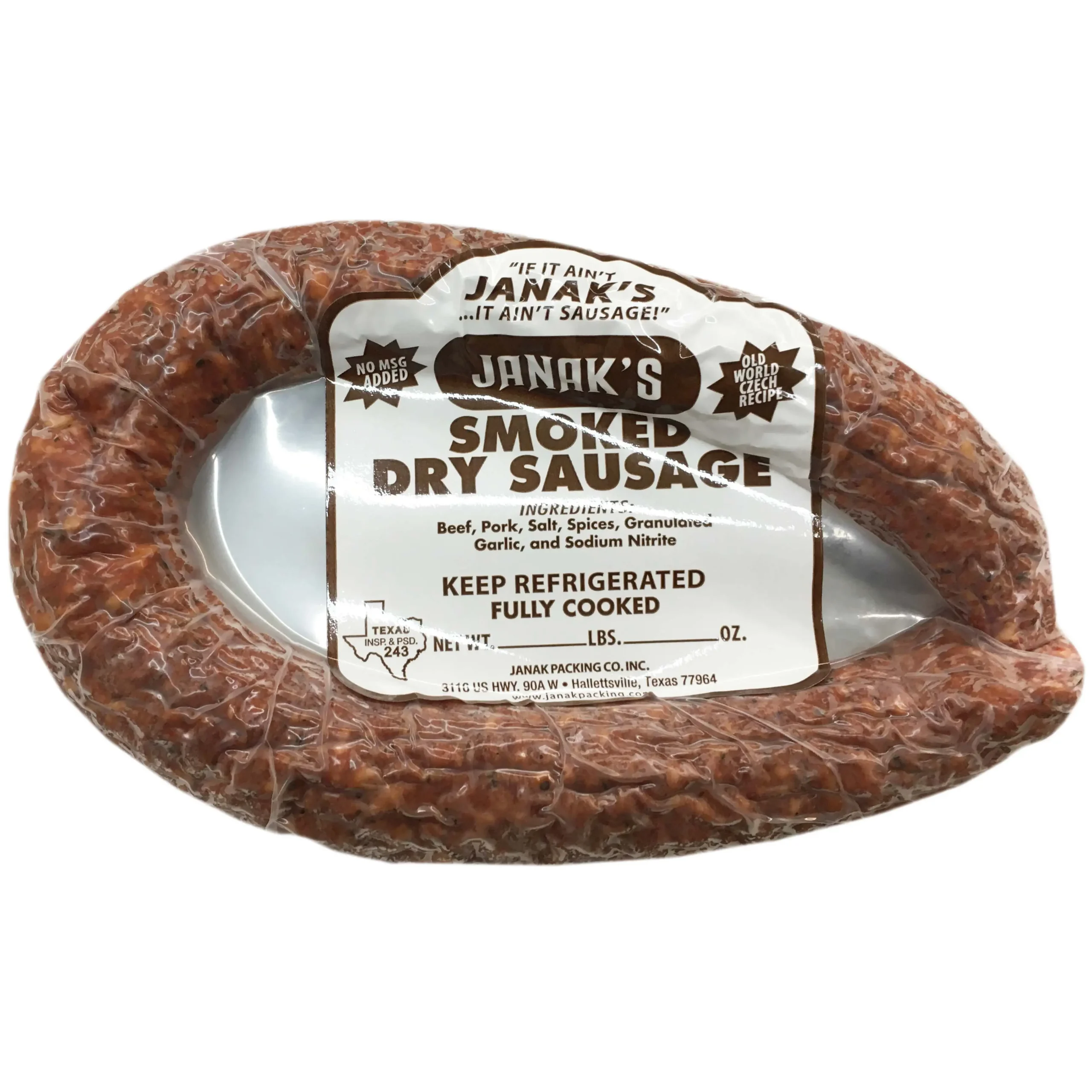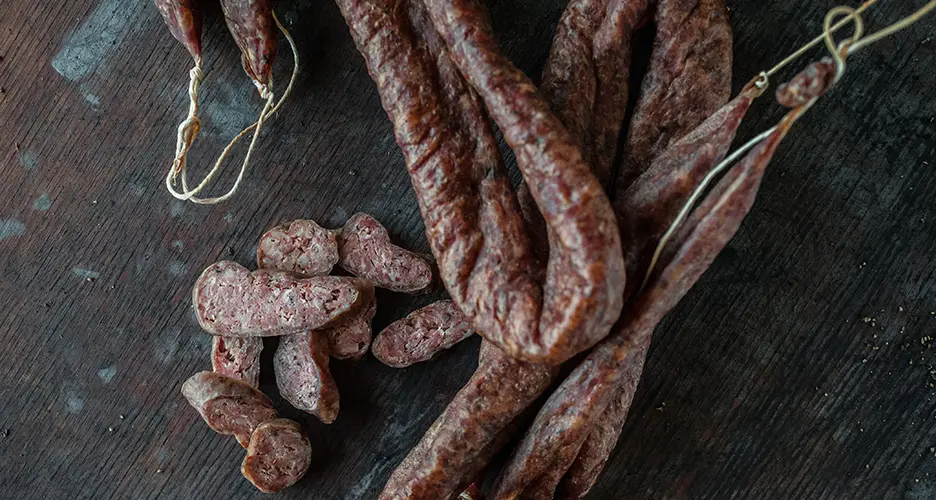If you’ve never had the chance to make sausage at home, you wouldn’t believe the experience you’re missing out on. Not only is it incredibly easy, but sausage tastes fantastic and can be made with whatever meat you have on hand, from venison to elk to squirrel - even typical beef or pork. It’s a great way to add some variety to your normal routine. Seriously - who doesn’t love homemade sausage?
- Types of Sausages
- Definition of Fresh Sausages
- Cooked and/or Smoked Sausages
- Meat Specialties
- Dry and Semi-Dry Sausages
- Examples of Dry and Semi-Dry Sausages
- Shelf Stability of Sausages
- Storage Recommendations
- Make Your Own Sausage at Home: A Step-by-Step Guide
- 5 Reasons to Make Your Own Sausage at Home
Types of Sausages
Sausages come in various forms, including uncooked and ready-to-eat options. Uncooked sausages can be made from red meat (such as beef, pork, lamb, or veal), poultry (such as turkey or chicken), or a combination of meats. It is important to cook uncooked sausages made with ground beef, pork, lamb, or veal to an internal temperature of 160°F (71°C), while sausages made with ground turkey or chicken should be cooked to 165°F (74°C) to prevent foodborne illnesses.
Ready-to-eat sausages, on the other hand, can be dry, semi-dry, or cooked. Dry sausages can be smoked, unsmoked, or cooked, while semi-dry sausages are usually fully cooked and partially dried in a smokehouse. Cooked sausages, such as bologna and frankfurters, are both cooked and may also be smoked.
Definition of Fresh Sausages
Fresh sausages are a type of meat product made from one or more kinds of meat, or meat and meat byproducts (such as heart, kidney, or liver), that have been finely minced. They are usually seasoned, sometimes cured, and may contain binders and extenders like wheat flour or non-fat dry milk. Fresh sausages must be kept refrigerated and thoroughly cooked before eating.
Cooked and/or Smoked Sausages
Cooked and/or smoked sausages are made from chopped or ground meats that have been seasoned, cooked, and/or smoked. They may also include meat byproducts. Examples of cooked and/or smoked sausages include liverwurst, hot dogs, bologna, knockwurst, cooked bratwurst, braunschweiger, cooked Thuringer, and cooked salami. Cooked salami, in particular, is made from fresh meats that are cured, stuffed into casings, and cooked in a smokehouse at high temperatures. It has a softer texture than dry and semi-dry sausages and must be refrigerated.
Meat Specialties
Some meat specialties resemble sausages but are ready-to-eat products made from seasoned and usually cooked or baked comminuted meats. These specialties are often served cold and sliced. Examples include chopped ham loaf, peppered loaf, head cheese, jellied corned beef, ham and cheese loaf, honey loaf, old-fashioned loaf, olive loaf, pickle and pimento loaf, scrapple, souse, and veal loaf.
Dry and Semi-Dry Sausages
Dry and semi-dry sausages are a popular category of dried meats, particularly in the United States. Dry sausages can be fermented by bacterial growth for preservation and to add a tangy flavor. Alternatively, they can be cultured with lactic acid, similar to how cheese and yogurt are made, to eliminate the fermentation phase and shorten the process. Most dry sausages are cooked, but there are a few exceptions.
In the traditional method of making dry sausages, a mixture of curing ingredients like salt and sodium nitrite, along with a starter culture of lactic acid bacteria, is combined with chopped and ground meat. This mixture is then placed in casings, fermented, and dried using a controlled, long, continuous air-drying process. The acidity produced during fermentation and the low moisture content of the finished product help eliminate pathogenic bacteria.

Compared to other types of sausages, dry sausages require more time to make and result in a more concentrated form of meat. They can range from 60% to 80% of their original weight before drying. Semi-dry sausages, on the other hand, are usually heated in a smokehouse to fully cook the product and partially dry it. They have good keeping qualities due to their lactic acid fermentation and sometimes heavy application of smoke. Some semi-dry sausages are mildly seasoned, while others are spicy and strongly flavored.
Examples of Dry and Semi-Dry Sausages
Dry sausages include sopressata, pepperoni, and Genoa salami. Sopressata is a type of salami, while pepperoni is air-dried and not cooked. Genoa salami, an Italian variety, is usually made from pork but may contain a small amount of beef. It is moistened with wine or grape juice and seasoned with garlic.
Semi-dry sausages include summer sausage, Lebanon bologna, cervelat, and Thuringer. These sausages are semi-soft, have good keeping qualities, and are usually seasoned to varying degrees of spiciness.
Shelf Stability of Sausages
Some dry sausages are shelf stable, meaning they do not require refrigeration or freezing for safe storage. These sausages undergo a longer production process and result in a more concentrated meat product. Shelf-stable sausages do not need a safe handling statement, cooking directions, or a keep refrigerated statement.
However, it is important to note that dry sausages are not cooked, and therefore may pose a higher risk to certain individuals. People who are considered at risk, such as older adults, young children, pregnant women, and those with weakened immune systems, should exercise caution when consuming dry sausages. The bacterium E. coli O157:H7 can survive the dry fermentation process, and there have been cases of illness associated with the consumption of dry cured salami contaminated with this bacteria. To mitigate this risk, specific processing rules have been developed for making dry sausages, including heat treatment as an alternative to fermentation.

Storage Recommendations
It is important to note that all sausages, except for dry sausages, are perishable and must be stored in the refrigerator. Follow the storage times outlined in the Sausage Storage Chart below for maximum quality:
- Fresh Sausage, uncooked: 1 to 2 days unopened or opened; 1 to 2 months in the freezer
- Fresh Sausage, after cooking by consumer: 3 to 4 days in the refrigerator; 2 to 3 months in the freezer
- Hard/Dry Sausage (whole): 6 weeks in a pantry; indefinitely in the refrigerator
- Hard/Dry Sausage (sliced): 1 to 2 months in the refrigerator
- Hot Dogs and other Cooked Sausage: 2 weeks in the refrigerator; 1 to 2 months in the freezer
- Luncheon meat: 2 weeks in the refrigerator; 1 to 2 months in the freezer
- Summer Sausage (Semi-dry): 3 months in the refrigerator; 1 to 2 months in the freezer
For sausages without a use-by date, follow the recommended storage times mentioned above. If you can't use the sausage within the recommended time, it can be safely frozen. Frozen sausages are safe to eat indefinitely, even if the date on the package has expired.

Make Your Own Sausage at Home: A Step-by-Step Guide
Making sausage at home is a rewarding and enjoyable experience. Follow these simple steps to create your own delicious homemade sausages:
- Grind your meat using an electric meat grinder.
- Add sausage seasonings and water to your meat, then mix well using a meat mixer or a large bowl.
- Feed your seasoned meat mixture through a sausage stuffer to fill your casings. Alternatively, you can use a grinder with stuffing tubes for this step.
- Close your casings using twine or hog rings.
- For smoked sausage, smoke it in a meat smoker or cook it in your oven until the internal temperature reaches 165°F (74°C).
And that's it! You now have your own homemade sausage ready to be enjoyed.
5 Reasons to Make Your Own Sausage at Home
Making your own sausage at home offers several advantages that are hard to resist. Here are five reasons why you should give it a try:
- Taste: Your homemade sausage will have a superior taste compared to store-bought options. You can customize the blend of spices and seasonings to suit your preferences.
- Quality: By making your own sausage, you have full control over the cuts of meat you use. You can be confident that there are no unwanted parts in your sausage.
- Health: You can choose the amount of fat and salt to add to your sausage, allowing you to create a healthier option. Additionally, homemade sausages do not contain chemicals, additives, or preservatives.
- Cost: Making sausage yourself is generally more cost-effective than buying mass-produced sausages. You can save money while enjoying a higher-quality product.
- Control: When someone else processes your game or meat, you have limited control over the processes and ingredients used. By making your own sausage, you have full control over every aspect of the process.
At LEM, we have everything you need to get started with sausage making. Our team is passionate about sausage and we are here to help. If you have any questions or need assistance, feel free to give us a call or send us an email. Let's get stuffing and enjoy the deliciousness of homemade sausage!
If you want to know other articles similar to Delicious and versatile homemade smoked dry sausage you can visit the Sausages category.


Related Articles